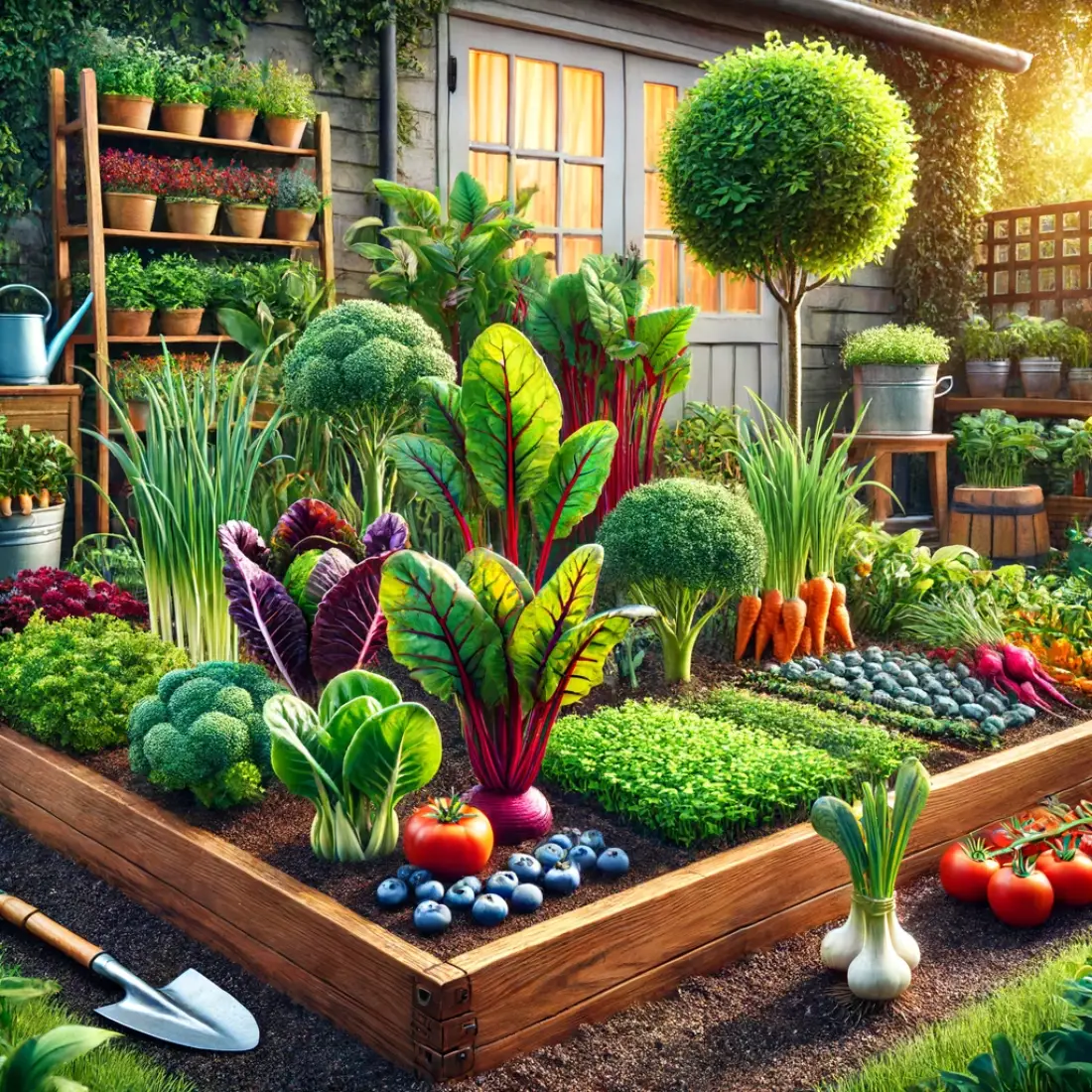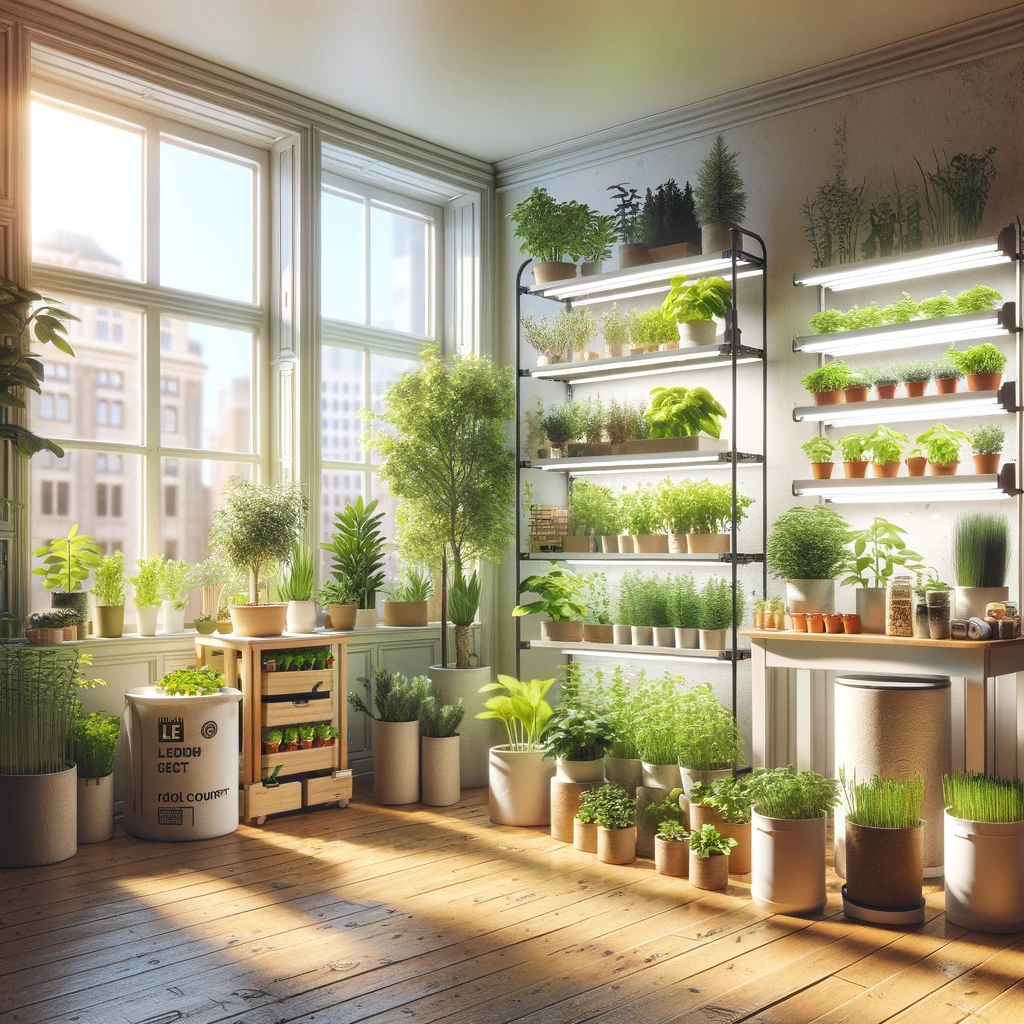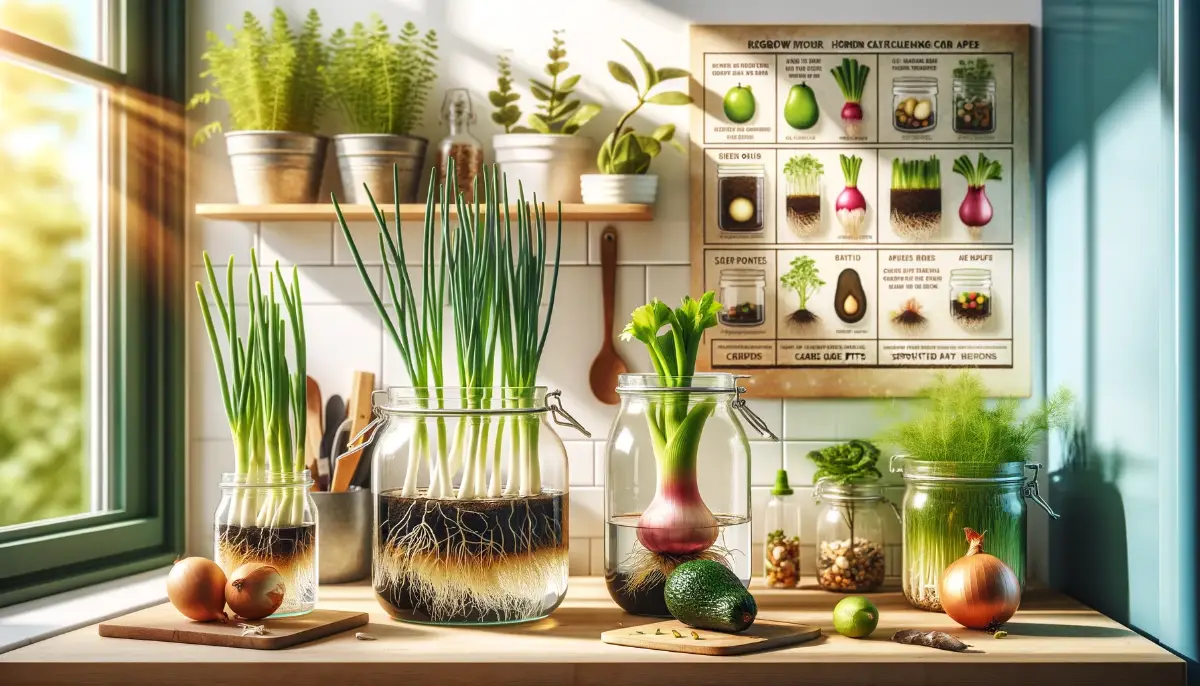Growing your own superfoods at home is an incredibly rewarding experience. Not only do you get access to fresh, nutritious produce, but you also gain the satisfaction of cultivating your own garden. Superfoods, known for their exceptional nutrient content and health benefits, can be easily grown in your backyard or even in containers.
- Growing superfoods at home provides fresh, nutritious produce and the satisfaction of gardening.
- Spinach, kale, Swiss chard, and microgreens are leafy greens that are easy to grow and packed with nutrients.
- Tomatoes, blueberries, garlic, beets, carrots, and peppers are versatile fruits and vegetables that thrive in home gardens.
- Each superfood has specific growing requirements, including soil type, sunlight, and watering needs.
- Harvesting techniques vary, but regular harvesting encourages continuous growth and ensures a steady supply of fresh produce.
Leafy Greens
Spinach
- Nutritional Benefits: Spinach is a powerhouse of nutrients, packed with vitamins A, C, and K, as well as iron and calcium. It’s an excellent choice for boosting your immune system and maintaining bone health.
- Growing Tips: Spinach thrives in cool weather, making it perfect for spring and fall planting. It prefers well-drained soil rich in organic matter. Regular watering is essential to keep the soil consistently moist but not waterlogged. Spinach can be grown in garden beds or containers.
- Harvesting: Harvest spinach leaves when they reach a usable size, typically 3-4 inches long. Regular harvesting encourages new growth. Pick the outer leaves first, allowing the inner leaves to continue growing.
Kale
- Nutritional Benefits: Kale is another nutrient-dense leafy green, high in vitamins A, C, and K, as well as antioxidants. It’s known for its anti-inflammatory properties and is a great addition to a healthy diet.
- Growing Tips: Kale grows best in cool weather and can tolerate light frosts, which can even enhance its flavor. Plant kale in well-drained, fertile soil and ensure it gets plenty of sunlight. Water consistently to keep the soil moist.
- Harvesting: Harvest kale leaves when they are about the size of your hand. Start with the outer leaves and work your way inwards. This method promotes continuous growth and provides a steady supply of fresh kale.
Swiss Chard
- Nutritional Benefits: Swiss chard is rich in vitamins A, C, and K, and is a good source of magnesium and potassium. It’s known for its vibrant stalks and is as nutritious as it is visually appealing.
- Growing Tips: Swiss chard is a versatile green that grows well in a variety of climates. It prefers well-drained soil and moderate watering. Swiss chard can be grown in garden beds or containers, making it accessible for all gardeners.
- Harvesting: Cut the outer leaves of Swiss chard when they are young and tender, around 6-8 inches long. Leave the inner leaves to continue growing, ensuring a continuous harvest throughout the growing season.
Microgreens
- Nutritional Benefits: Microgreens are young vegetable greens that are packed with concentrated nutrients. They are rich in vitamins A, C, E, and K, and are known for their intense flavors and vibrant colors.
- Growing Tips: Microgreens are easy to grow indoors, making them perfect for urban gardeners. Use shallow seed trays filled with potting mix. Scatter the seeds evenly and cover them lightly with soil. Place the trays on a sunny windowsill or under grow lights. Water gently and keep the soil moist.
- Harvesting: Microgreens are ready to harvest in 1-2 weeks, depending on the variety. Use scissors to snip the greens at the base once they reach about 2 inches tall. Enjoy them fresh in salads, sandwiches, or as garnishes.
Fruits and Vegetables
Tomatoes
- Nutritional Benefits: Tomatoes are rich in vitamins C and K and contain a powerful antioxidant called lycopene, which is linked to many health benefits, including reduced risk of heart disease and cancer.
- Growing Tips: Tomatoes require full sun (at least 6-8 hours of direct sunlight daily) and well-drained, fertile soil. They thrive in warm weather and need consistent watering, preferably at the base to avoid wetting the foliage. Support plants with stakes or cages to keep the fruit off the ground.
- Harvesting: Harvest tomatoes when they are fully colored (red, yellow, or orange, depending on the variety) and firm to the touch. Gently twist and pull to avoid damaging the plant.
Blueberries
- Nutritional Benefits: Blueberries are a fantastic source of antioxidants, particularly vitamin C and K. They support heart health and improve brain function.
- Growing Tips: Blueberries prefer acidic soil with a pH between 4.5 and 5.5. They need full sun for optimal growth and consistent moisture. Mulching helps retain soil moisture and reduce weeds. Blueberries are also great for containers.
- Harvesting: Harvest blueberries when they are fully blue and slightly soft. They do not ripen after being picked, so ensure they are ripe before harvesting. Gently roll the berries off the cluster to avoid damaging the plant.
Garlic
- Nutritional Benefits: Garlic is known for its medicinal properties, containing a compound called allicin that boosts the immune system and reduces blood pressure.
- Growing Tips: Garlic is best planted in the fall in well-drained soil and a sunny spot. Break apart the garlic bulb and plant individual cloves about 2 inches deep, pointed end up. Cover with mulch to protect from winter weather.
- Harvesting: Harvest garlic when the lower leaves start to turn yellow and brown, usually in late spring or early summer. Carefully lift the bulbs out of the ground with a garden fork and cure them in a dry, shaded area for about two weeks.
Beets
- Nutritional Benefits: Beets are high in fiber, vitamins C and folate, and are known for their ability to lower blood pressure and improve athletic performance.
- Growing Tips: Beets prefer cool weather and well-drained, loose soil. Plant seeds directly in the garden about 1 inch deep and thin the seedlings to ensure proper spacing. Keep the soil consistently moist.
- Harvesting: Harvest beets when the roots are about 1-3 inches in diameter, typically 7-8 weeks after planting. Gently pull the beets from the soil and remove the greens, leaving about an inch of stem to prevent bleeding.
Carrots
- Nutritional Benefits: Carrots are rich in beta-carotene, which the body converts to vitamin A. They also provide fiber and antioxidants, promoting eye health and supporting the immune system.
- Growing Tips: Carrots grow best in loose, sandy soil to allow their roots to expand. Plant seeds in rows and thin them as they grow to avoid overcrowding. Full sun is ideal, and consistent watering helps prevent splitting.
- Harvesting: Harvest carrots when they reach the desired size, usually 2-3 months after planting. Gently pull them from the soil, being careful not to break the roots.
Peppers
- Nutritional Benefits: Peppers are high in vitamins C and A and contain antioxidants that help reduce inflammation and support immune health.
- Growing Tips: Peppers thrive in warm weather and need well-drained soil and full sun. Water regularly and deeply to encourage deep root growth. Mulch around the plants to retain moisture and prevent weeds.
- Harvesting: Harvest peppers when they are fully colored (red, yellow, or orange, depending on the variety) and firm. Cut the peppers from the plant with scissors or a knife to avoid damaging the stems.
FAQs about Growing Superfoods at Home
How much sunlight do these superfoods need?
Most superfoods need full sun, which is about 6-8 hours of direct sunlight daily. Leafy greens like spinach and kale can tolerate partial shade but perform best with ample sunlight.
How often should I water my home-grown superfoods?
Water needs vary by plant, but generally, superfoods should be watered when the top inch of soil feels dry. Overwatering can lead to root rot, so ensure proper drainage.
Can I grow these superfoods in containers?
Yes, many superfoods such as tomatoes, peppers, and herbs thrive in containers. Ensure the containers have drainage holes and are large enough to support the mature plant.
What are the best soil types for growing superfoods?
Most superfoods prefer well-drained, fertile soil rich in organic matter. Blueberries need acidic soil with a pH of 4.5 to 5.5, while carrots do best in loose, sandy soil.
How can I prevent pests and diseases in my home garden?
Practice crop rotation, use companion planting, and introduce beneficial insects like ladybugs. Organic methods such as neem oil and insecticidal soap can help control pests.
How do I know when my superfoods are ready to harvest?
Harvest times vary by plant. For example, tomatoes should be fully colored and firm, while spinach leaves should be harvested when they are about 3-4 inches long. Check specific harvesting guidelines for each plant.
Can I grow superfoods indoors?
Yes, certain superfoods like microgreens, herbs, and some leafy greens can be grown indoors with sufficient light, either from a sunny windowsill or grow lights.
What are the benefits of growing superfoods at home?
Growing superfoods at home ensures you have fresh, nutritious produce free from pesticides. It also reduces your carbon footprint and can be a therapeutic hobby.
How do I prepare the soil for planting superfoods?
Start by testing your soil’s pH and nutrient levels. Amend the soil with compost or organic matter to improve fertility and structure. Ensure proper drainage by avoiding compacted soil.
Are there any superfoods that are particularly easy for beginners to grow?
Yes, superfoods like spinach, kale, and tomatoes are relatively easy for beginners. They have straightforward growing requirements and can yield a good harvest with minimal effort.









